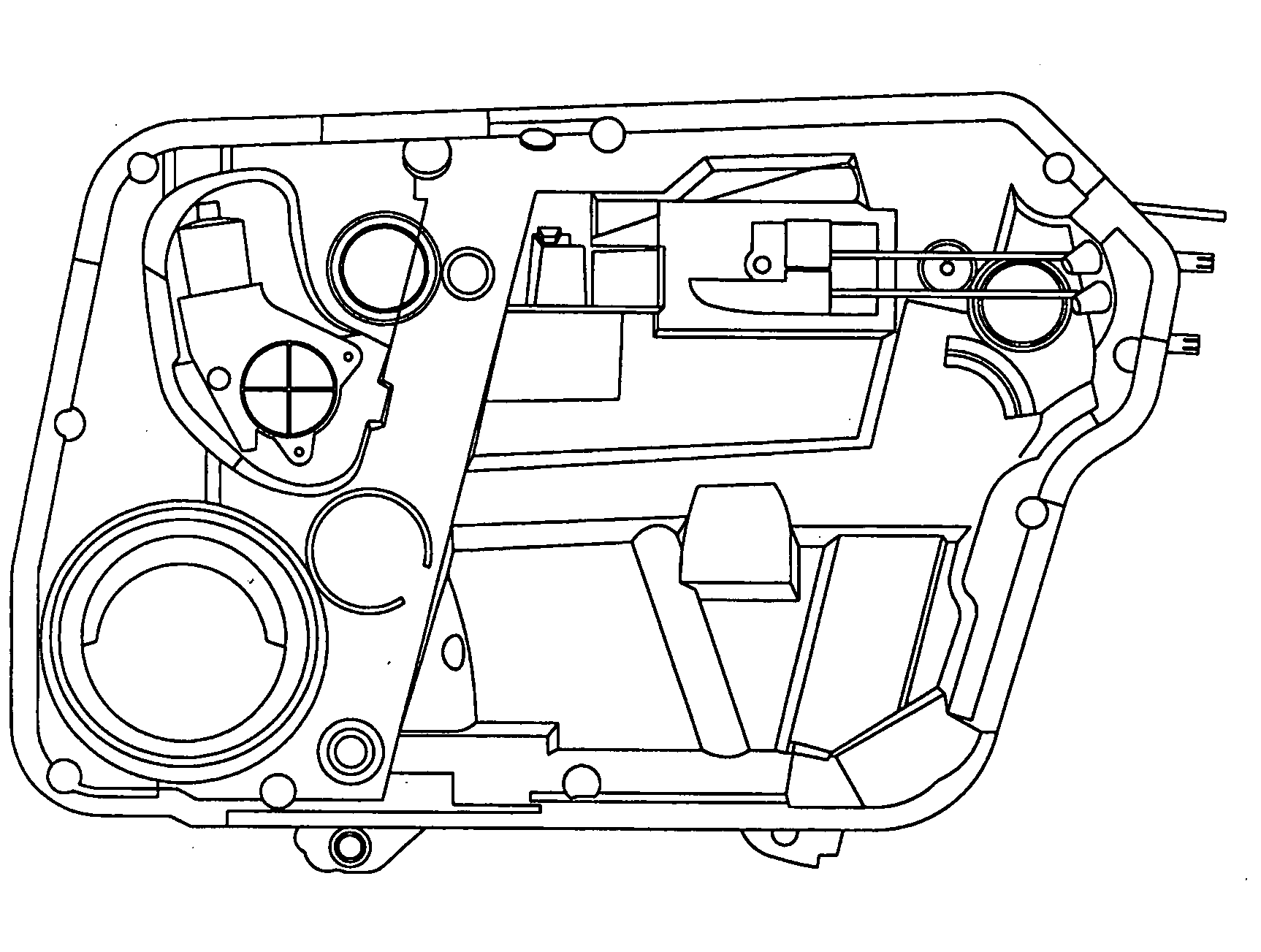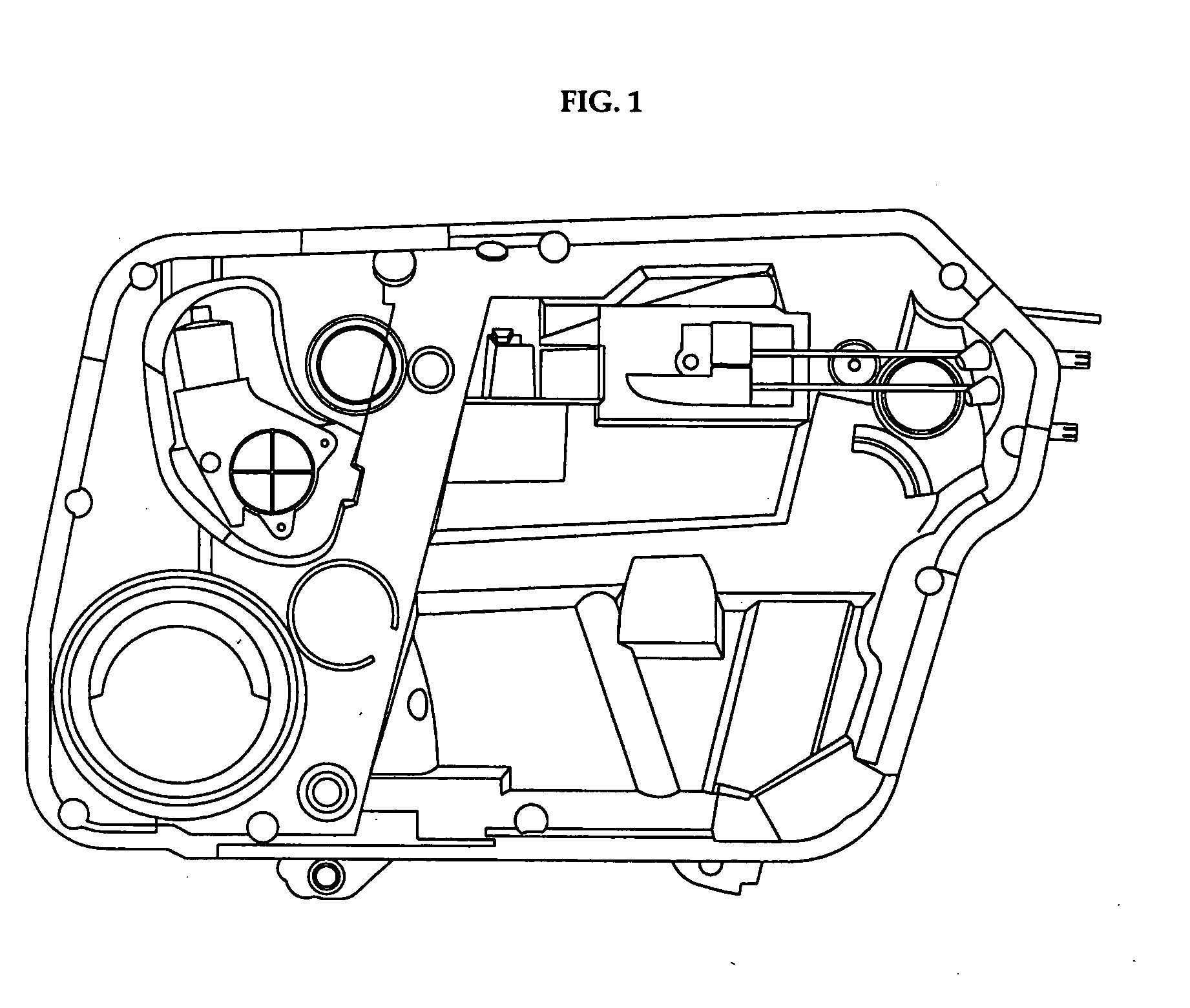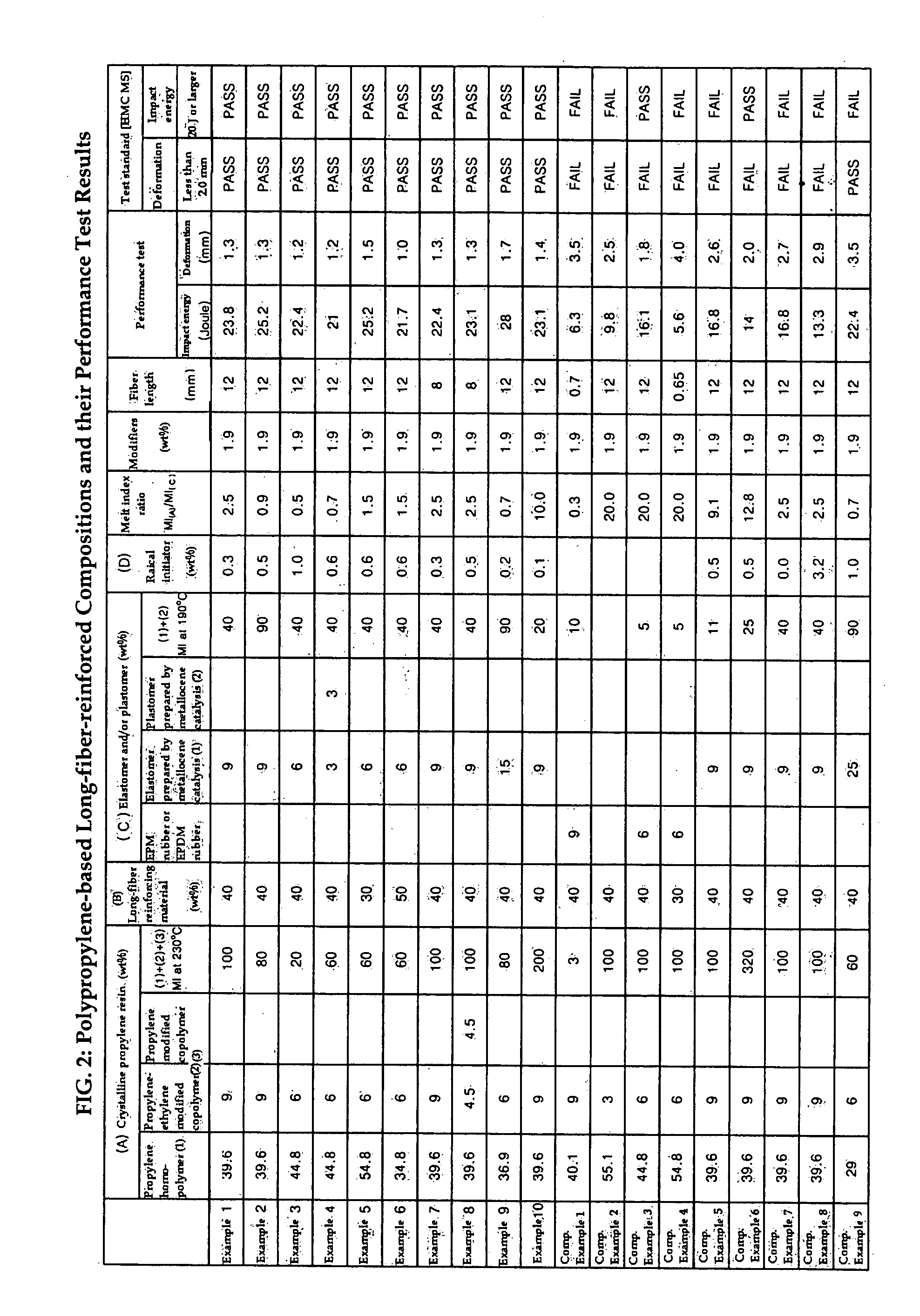Long-fiber-reinforced polypropylene compositions and door shield module plate produced with the same
a technology of reinforced polypropylene and composition, which is applied in the direction of film/foil adhesives, synthetic resin layered products, tyre parts, etc., can solve the problems of poor thermal resistance and mechanical strength, inability to use certain parts, and inability to meet the needs of the aforementioned short-fiber-reinforced polypropylene, etc., to achieve superior rigidity, great impact resistance, and superior impact resistance
- Summary
- Abstract
- Description
- Claims
- Application Information
AI Technical Summary
Benefits of technology
Problems solved by technology
Method used
Image
Examples
preparation example 1
Preparation of Propylene-Based Long-Fiber Reinforced Composition
[0036] Compositions of Examples 1-10, Comparative Example 2-3 and Comparative Examples 5-9 were prepared according to the specifications provided in Table 2 (see FIG. 2) by melting a crystalline polypropylene resin, an elastomer and / or a plastomer polymerized by a metallocene-based catalyst, a radical initiator [2,5-dimethyl 2,5-bis(t-butylperoxy)hexane] along with 2,000 ppm of a primary antioxidant (IGANOX 1010), 3,000 ppm of a secondary antioxidant (IGAFOS 168), 1,000 ppm of a primary UV stabilizer (hindered amine), 1,000 ppm of a secondary UV stabilizer (benzophenone), 1,000 ppm of a slip-type lubricant (stearic acid) and 11,000 ppm of a filler (talc & carbon black). Into an impregnation bath containing the resin composition was added a glass fiber filament cluster having a diameter of 17 μm, which had been surface-treated with aminosilane. After 1-3 sec of impregnation at 250° C., the strand in which the glass fibe...
preparation example 2
Preparation of Propylene-Based Short-Fiber Reinforced Composition
[0051] In Comparative Example 1 and Comparative Example 4, as shown in FIG. 2, a crystalline polypropylene resin, an elastomer and / or a plastomer prepared by metallocene-catalyzed polymerization and 2,000 ppm of a primary antioxidant (IGANOX 1010), 3,000 ppm of a secondary antioxidant (IGAFOS 168), 1,000 ppm of a primary UV stabilizer, 1,000 ppm of a UV stabilizer, 1,000 ppm of a slip-type lubricant and 11,000 ppm of a filler (talc & carbon black), and a performance enhancer or property modifier, were mixed with chopped 3 mm-glass fiber that had been fed from the side feeder of a twin-axis extruder at 230° C. for 40 sec. The mixture was squeezed out through the nozzle as a strand, which was then cut into 3 mm-long pellets and dried. Average glass fiber length of the pellet was measured and recorded as shown in FIG. 2.
[0052] In Comparative Example 1, a polypropylene-based short-fiber reinforced composition comprising ...
PUM
| Property | Measurement | Unit |
|---|---|---|
| diameter | aaaaa | aaaaa |
| length | aaaaa | aaaaa |
| melt index | aaaaa | aaaaa |
Abstract
Description
Claims
Application Information
 Login to View More
Login to View More - R&D
- Intellectual Property
- Life Sciences
- Materials
- Tech Scout
- Unparalleled Data Quality
- Higher Quality Content
- 60% Fewer Hallucinations
Browse by: Latest US Patents, China's latest patents, Technical Efficacy Thesaurus, Application Domain, Technology Topic, Popular Technical Reports.
© 2025 PatSnap. All rights reserved.Legal|Privacy policy|Modern Slavery Act Transparency Statement|Sitemap|About US| Contact US: help@patsnap.com



